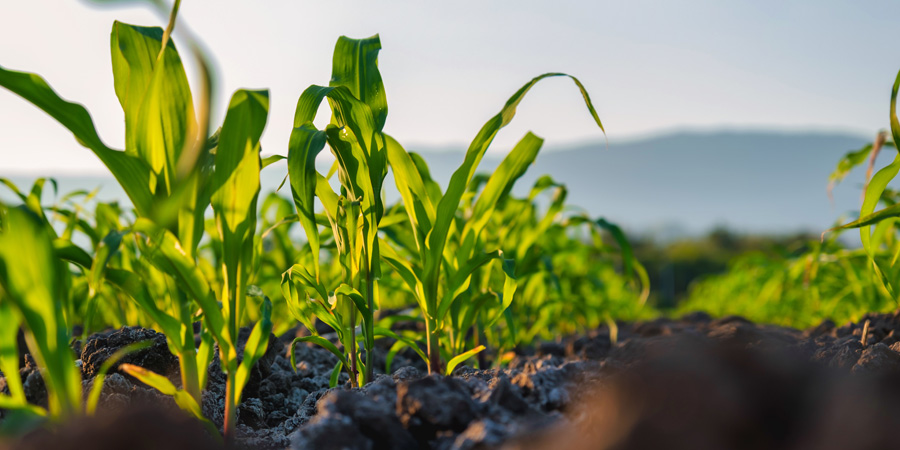Plant-associated microbiome shaped by “host-microorganisms-environment” interactions and defining plant health

Plants host a diversity of microorganisms (bacteria, fungi, protists, nematodes, and viruses), representing the plant microbiota. Numerous studies have linked individual microbial taxa and genes to plant colonization, physiology, and fitness (Bergelson, 2019; Wagner, 2016), including growth promotion, nutrient uptake, stress tolerance and resistance to pathogens (Backer, 2018; Gouda, 2018). Yet, members of a plant microbiota could also have not only beneficial but also neutral and pathogenic microorganisms.
Plant-associated microbial communities are structured by general rules for community assembly and show a defined phylogenetic organization (Carlström, 2019). Their assembly is governed by complex interactions among microorganisms, their plant host, and the environment, although the underlying mechanisms are not fully understood.
The present review (Triveldi, 2020) explores the current understanding of the composition, assembly, and dynamics of plant-associated microbial communities and how those interactions modulate their beneficial traits.
Bacterial, fungal and viruses’ communities from various plant-associated niches
Clear differences are observed among the microbial communities and microbiome composition in different plant compartments (rhizosphere, endophytes and phyllosphere). For instance, in the endophytes, the most frequent members are Proteobacteria and Firmicutes, followed by Bacteroidetes, whereas members of the Acidobacteria, Planctomycetes, Chloroflexi and Verrucomicrobianare are depleted. In the phyllosphere, the major community comprises bacteria belonging to phylum Proteobacteria and to the Bacteroidetes, Firmicutes and Actinomycetes. These differences indicate that the plant compartment is a major selective factor that shapes the composition of plant-associated microbiota.
In addition to the role of bacterial and fungal communities, soil and plant processes are directly influenced by other organisms, including viruses, archaea, nematodes, and protists. Viruses play mainly a critical part in bacterial community assembly and turnover in the soil, but their function in plant- associated environments is not completely understood (Pratama, 2018). According to a recent report, viruses affect soils’ microbiome structure and function (Trubl, 2018).
Nevertheless, it is important to note that each plant has a “core microbiota”, which consists of persistent and ubiquitous microbial community members in almost all communities associated with a particular host (Vandenkoornhuyse, 2015; Astudillo- García, 2017; Yeoh, 2017). The coexisting members of the core microbiota are selectively recruited and enriched in parallel and are well adapted to life on and/or within plant tissue.
Plant colonization and community assembly are shaped by multiple and complex interactions
Current studies identified key factors influencing the assembly of plant-associated microbiota and have linked individual microbial taxa and genes to plant colonization, plant physiology and plant fitness traits. Indeed, the selective assembly of plant-associated microbiomes requires multiple and complex interactions between plant–microorganism and microorganism–microorganism.
The plant interacts with the microbiome through the release of root exudates such as organic acids, sugars and secondary metabolites throughout its developmental stages. Meanwhile, bulk soil microorganisms act as ‘seed banks’ and vary in their genomic potential to degrade, utilize and metabolize distinct metabolite substrates in the root exudate (Xu J, 2018; Levy, 2017; Zhang, 2019). The presence of certain type of transporters in plant-associated microorganisms provide them selective advantage. Consequently, the community is shaped by intense microorganism–microorganism interactions mediated via the strain-specific production and perception of antimicrobial molecules (Xu L, 2018).
The plant-associated microbiome provides benefits to the plant
Complex microorganism–microorganism and host–microorganism interactions maintain the balance between different members of the microbial community in favor of beneficial microorganisms that contribute to plant health. Those benefits are provided through various direct or indirect mechanisms, including growth promotion, stress control and defense against pathogens and pests. Those benefits mediated by the microbiome can be initiated in any part of a plant and transmitted to other parts, but they are mostly initiated belowground (Richardson, 2011).
Plant growth promotion is insured by direct effects mediated through nitrogen fixation, unlocking of essential nutrients from minerals and enhancing plant capacity to take up nutrients from the soil (Hestrin, 2019; Richardson, 2011). Other direct effects that contribute to plant growth are mediated by mitigating abiotic stress through the production of specific molecules such as plant hormones and detoxification enzymes (Fitzpatrick, 2018).
Benefits can also be indirect, as the plant-associated microbiome protects the plant against pathogens or pests through antagonism or through inducing systemic resistance in plants (Stringlis, 2018). The impact of natural plant defense by micro-organisms on plant health is most clearly demonstrated in disease-suppressing soils, where plant root exudates stimulate, enrich and support soil micro-organisms as the first line of defense against soil-borne pathogens (Mendes, 2011).
In conclusion, overall, beneficial plant–microbiome interactions improve the growth performance of plants and their health.
Based on: Trivedi, P., et al. Plant–microbiome interactions: from community assembly to plant health. Nat Rev Microbiol 2020;18: 607–62
- Microbial communities and microbiome composition vary in different plant compartments (rhizosphere, endophytes and phyllosphere).
- Although bacterial and fungal lineages contribute mostly to the plant-associated microbiome by abundance, there is a critical knowledge gap concerning the shape and drivers of other fractions of the plant microbiome (viruses, archaea, protists and nematodes) that influence bacterial and fungal communities.
- Complex microorganism–microorganism and host–microorganism interactions maintain the balance between different members of the microbial community in favour of beneficial microorganisms that contribute to plant health.
- Functions of plant-associated microbiome include nutrient acquisition, disease resistance and stress tolerance.
